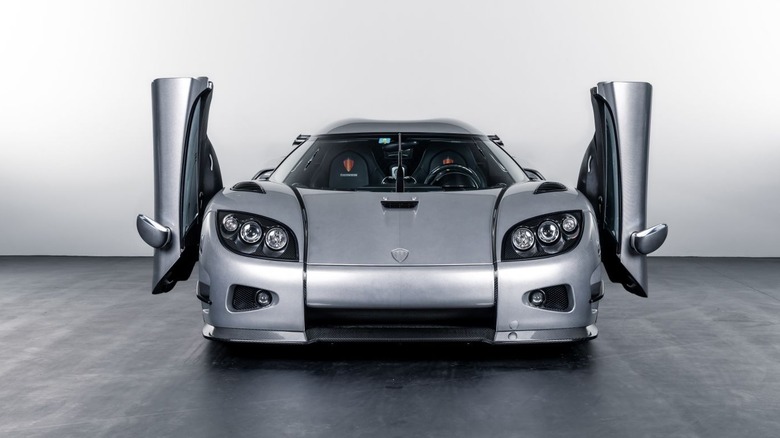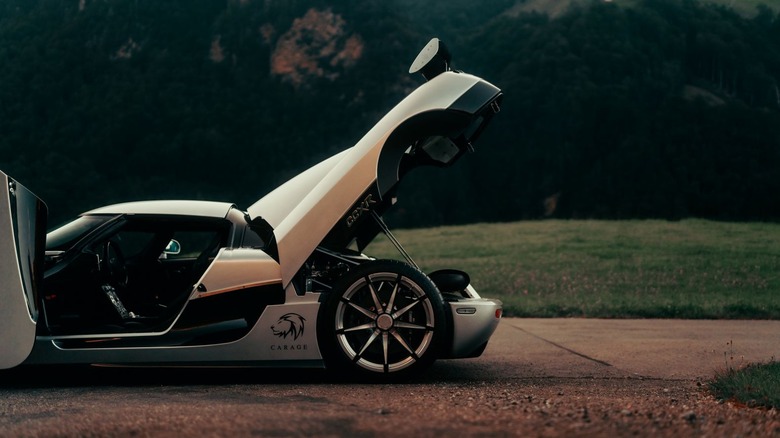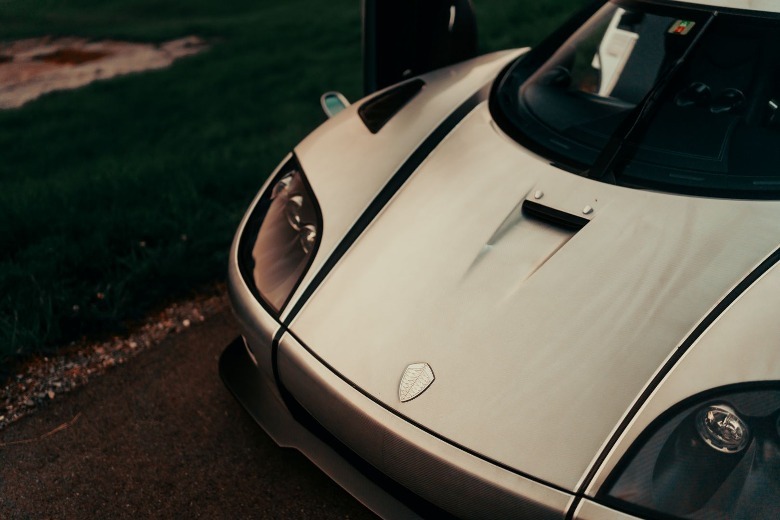Here's What Makes The Koenigsegg CCXR Trevita One Of The Most Expensive Cars Ever Made
The Koenigsegg CCXR Trevita is hypercar royalty. It belongs in the echelon of the world's most expensive cars. Retired boxing legend Floyd Mayweather Jr. paid $4.8 million in 2015 to own one of only two Koenigsegg CCXR Trevita models that left the Ängelholm factory in Sweden, making it the most expensive car in the boxer's collection.
While Floyd "The Best Ever" Mayweather Jr. sold his CCXR Trevita at auction in 2017 for $2.6 million, it doesn't diminish the fact that Koenigsegg cars are the stuff of legend. The CCXR Trevita, in particular, is as exclusive as it gets. With only two units in existence, it's not hard to understand why it commands a hefty price tag. Then again, the CCXR Trevita's limited production run is just one of the many reasons it's a genuine megabucks hypercar.
According to Koenigsegg, "Trevita" is short for the Swedish words meaning "three whites," and it refers to the bespoke white diamond weave carbon fiber body developed in-house exclusively for the CCXR Trevita. The white carbon fiber body features silvery-white weaves that align perfectly to create a stunning finish.
Koenigsegg's proprietary diamond weave
It's not unusual for exotic supercars and hypercars to have carbon fiber bodies. High-end exotica like the Hennessey Venom F5, McLaren Speedtail, and Lexus LFA have benefitted from the lightweight benefits of having carbon fiber bodies. Then again, things were different before the CCXR Trevita's reveal in 2010, as only black carbon fiber was available to car manufacturers.
Designed, as Koenigsegg puts it, to sparkle "as if millions of tiny white diamonds are infused inside the visible carbon fiber bodywork" when hit by sunlight, the automaker developed a proprietary coated fiber solution that transforms ordinary black carbon fiber into a shimmering, silver-white material called the Koenigsegg Proprietary Diamond Weave.
However, perfectly aligning and weaving the white carbon fiber body proved too costly and complex. While the initial plan was to make three models of the vehicle, the complicated production method meant that Koenigsegg made only two, resulting in the CCXR Trevita becoming one of the most expensive and exclusive cars to wear the Koenigsegg badge.
Koenigsegg did it again with the CCXR Trevita's successor, the Agera, but utilized a different method. Whereas the former has a diamond weave carbon fiber body, the Agera has a lightweight body made from pre-impregnated carbon fiber and kevlar. Other cars like the Pagani Huayra Roadster BC Supernova and BAC Mono R followed suit with bespoke, colored carbon fiber bodies.
Big engine, world-beating speed
The Koenigsegg CCXR Trevita's proprietary white carbon body is worth a second and third look, but what lies beneath is what makes it a genuinely sensational and expensive performance car. Behind the cabin is a 4.7-liter aluminum V8 featuring double overhead camshafts, sequential multipoint fuel injection, dry sump lubrication, a carbon fiber intake manifold, and twin Rotrex centrifugal superchargers that produce 23.2 psi (1.6 bar) of boost. The V8 engine produces 1,018 horsepower and 740 lb-ft of torque on E85 or E100 gas.
With the engine weighing 392 lbs (178 kg) the CCXR Trevita can rush from zero to 60 mph in 2.9 seconds and achieve a 250+ mph top speed. For context, the CCXR Trevita has a higher top speed than the Pagani Huayra, Porsche 918 Spyder, and the legendary McLaren F1.
Helping the cause are forged 19-inch front and 20-inch rear alloy wheels wrapped in Michelin Supersport tires, front & rear ceramic brakes, a double carbon rear wing, an inconel exhaust, and a solid state digital semiconductor electrical system devoid of relays or fuses. The collection of a fully bespoke body, a hand-built V8 engine, world-beating performance credentials, and the ultra-limited number of models in existence makes the Koenigsegg CCXR Trevita one of the costliest and most exotic hypercars on the planet.




